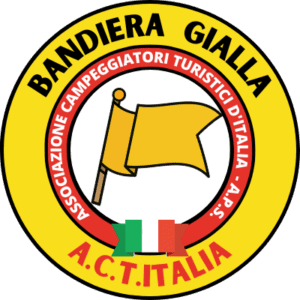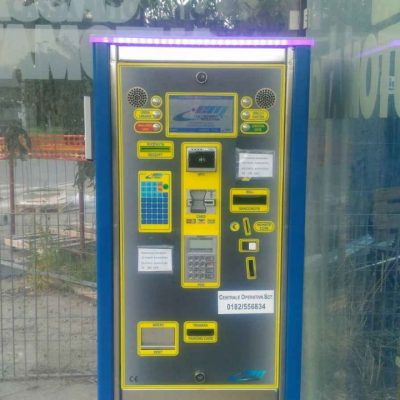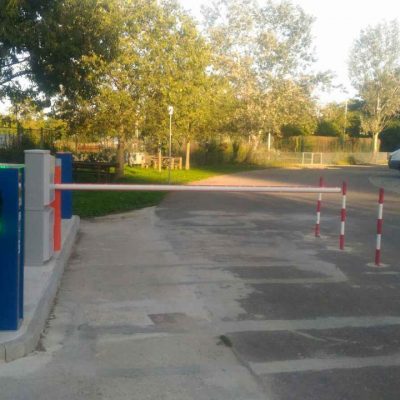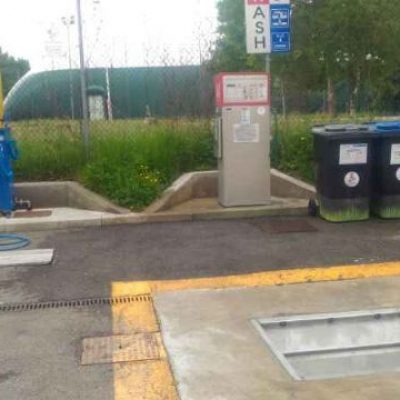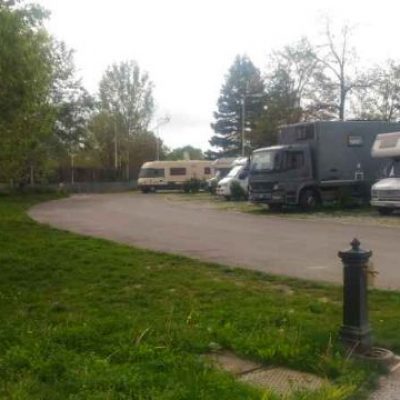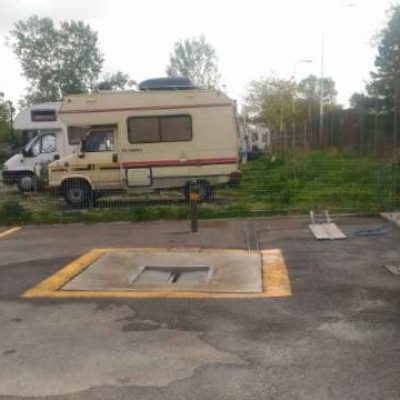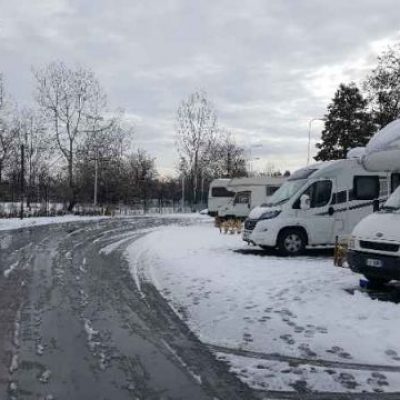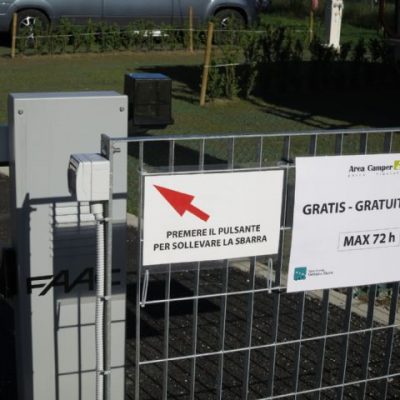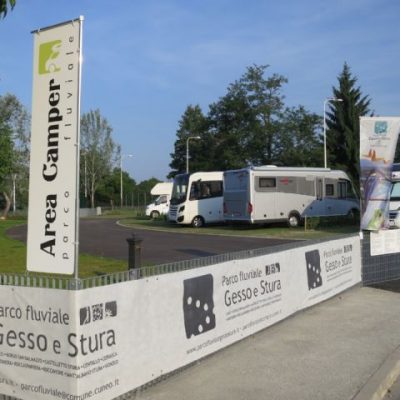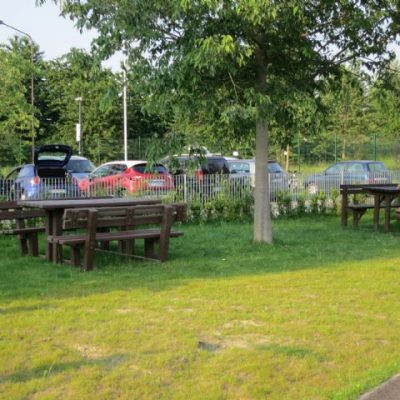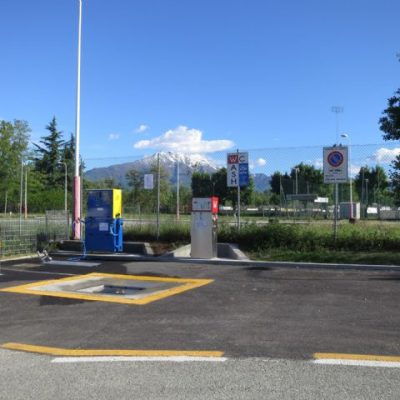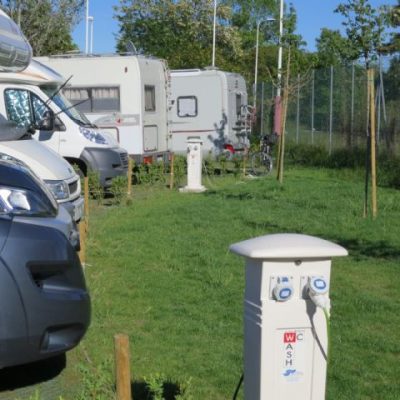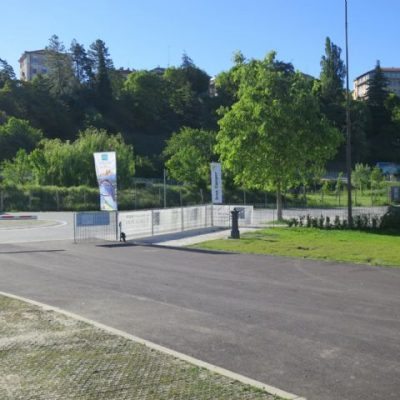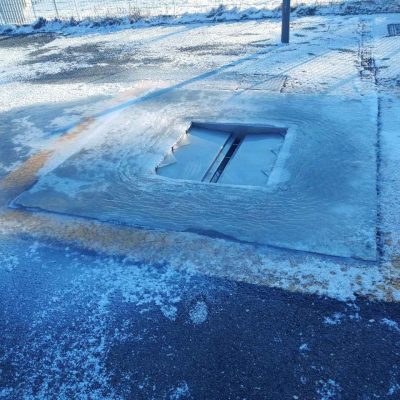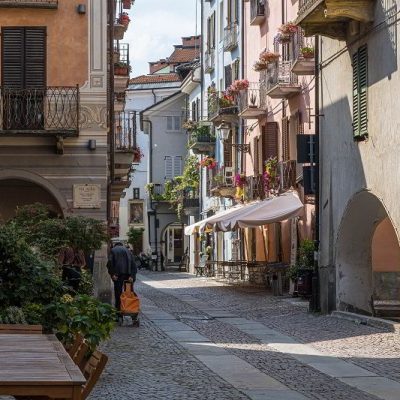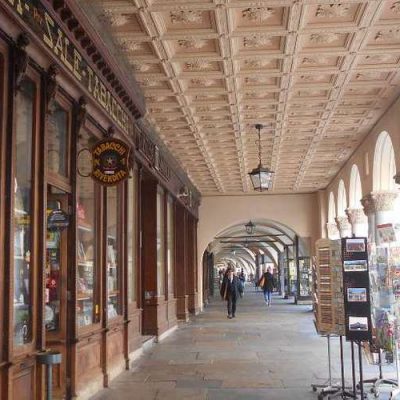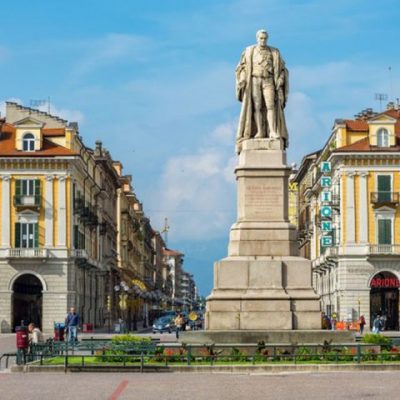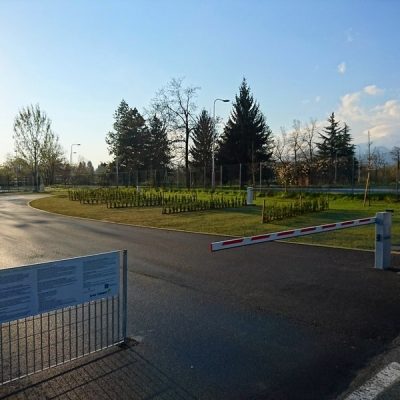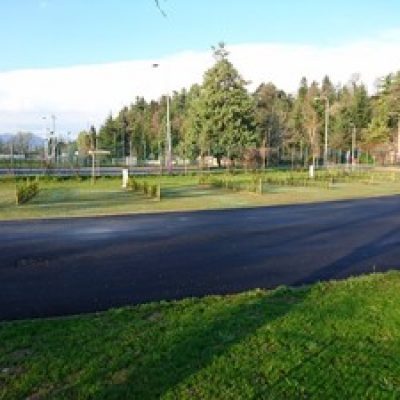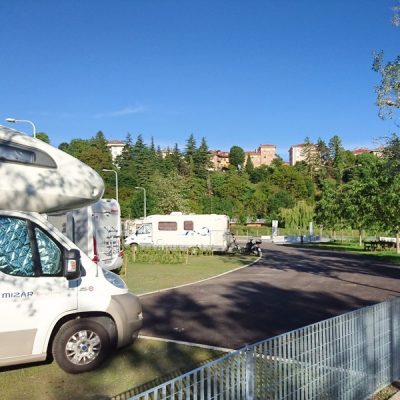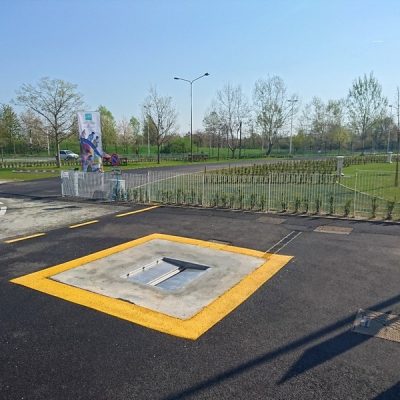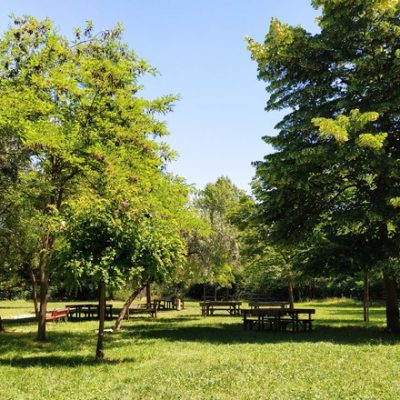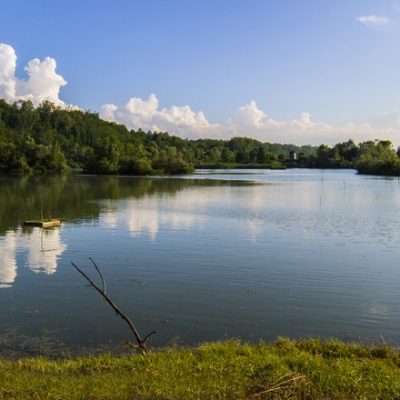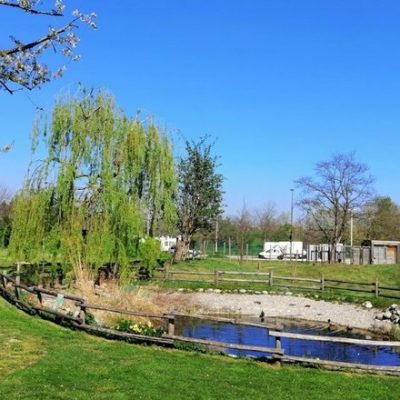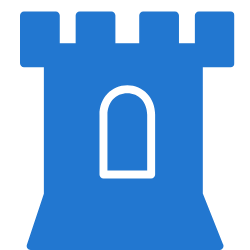Wedge

The Staging Area
Newly built Equipped Area with 8 places, located in a strategic location, because it is immersed in the River Park, close to the city center, connected to the plateau with the panoramic elevator, which allows you to reach Galimberti Square in just 5 minutes.
Near the area are sports facilities (municipal swimming pool, protected cycling circuit, roller skating and soccer fields).
The area is under video surveillance, and during your stay you can leave and return with your vehicle: in fact, the system keeps a spot reserved so that it is free when you return.
The area has 550 square meters of indoor green area and is equipped with an inlet for drinking water, one for electricity supply, drainage for black water and gray water, entrance and exit bar, benches and tables in the green area.
Maximum permitted parking 72 hours.
Annual Opening.
Address:
Walther Cavallera Square – 12100 Cuneo (CN)
GPS COORDINATES:
44°23’7.968” N – 7°33’6.045” E
CONTACTS:
Tel: +39 0171 444221
E-mail: parcofluviale@comune.cuneo.it
All Services

Paid admission

Annual Opening

Electrical Connection

Water Load

Waste Water Discharge

Empty-Cassette Service

Empty-Cassette Service

Asphalt Bottom

Grass Fund

Controlled Input

Illuminated Area

Video Surveillance Area

Picnic Area

Adjacent sports facilities and community swimming pool

Pets Allowed
More Info
The Rest Area is just a stone’s throw from the Park’s nature-cycling trails and right in front of its environmental education center, The House of the River, which hosts initiatives, events, and workshops for children and adults all year round, as well as valuable visitor services such as ParkoBike, MTB rentals, or the bike wash.
Cuneo was built on the end of a plateau bounded by the Stura di Demonte River and the Gesso stream.
The triangular shape precisely resembles a “wedge” in whose narrowest part the city was founded, at the foot of the southwestern Alps of Piedmont.
The cathedral, built on the site of an ancient country church dedicated to St. Mary, was enlarged in 1620 in several stages culminating in the design by architect G. Boetto, with the dome and 19th-century frescoes.
The central Via Roma leads from the tip of the wedge to Piazza Galimberti, or the city living room named after the National Hero of the Italian Resistance. The 19th-century square is surrounded by arcades, and in the center is the monument to Giuseppe Barbaroux, minister of Charles Albert and author of the Albertine Code.
Also located on Rome Street is the Church of St. Ambrose. The patron saint of Milan found a church dedicated to him here in Cuneo as thanksgiving to the very Milanese who rebuilt the city in 1230 after one of the first sieges.
Santa Croce and the St. Francis complex are also worth visiting. The latter also houses the Civic Museum and is in close proximity to the covered market whose structure displays Art Nouveau elements.
A copper reproduction of the 1903 Ceirano model automobile can be seen in the courtyard of the Civic Palace.
Also among the things to see in Cuneo is the picturesque “Contrada Mondovi’ ” formerly known as the contrada of the Jews. This was, in fact, the site of the Jewish ghetto that extended to the Chalk River and the Synagogue that is visible from the outside.
